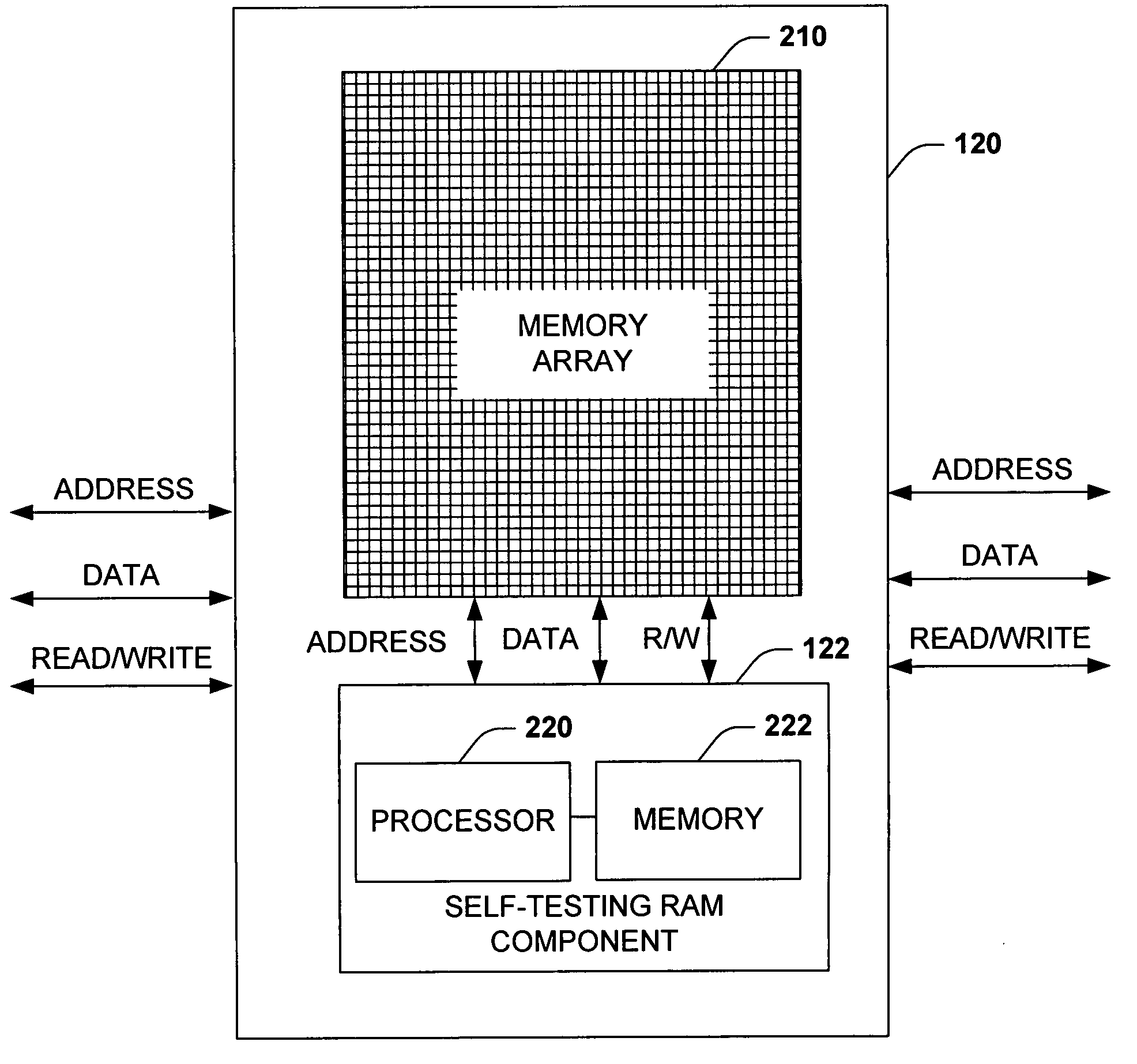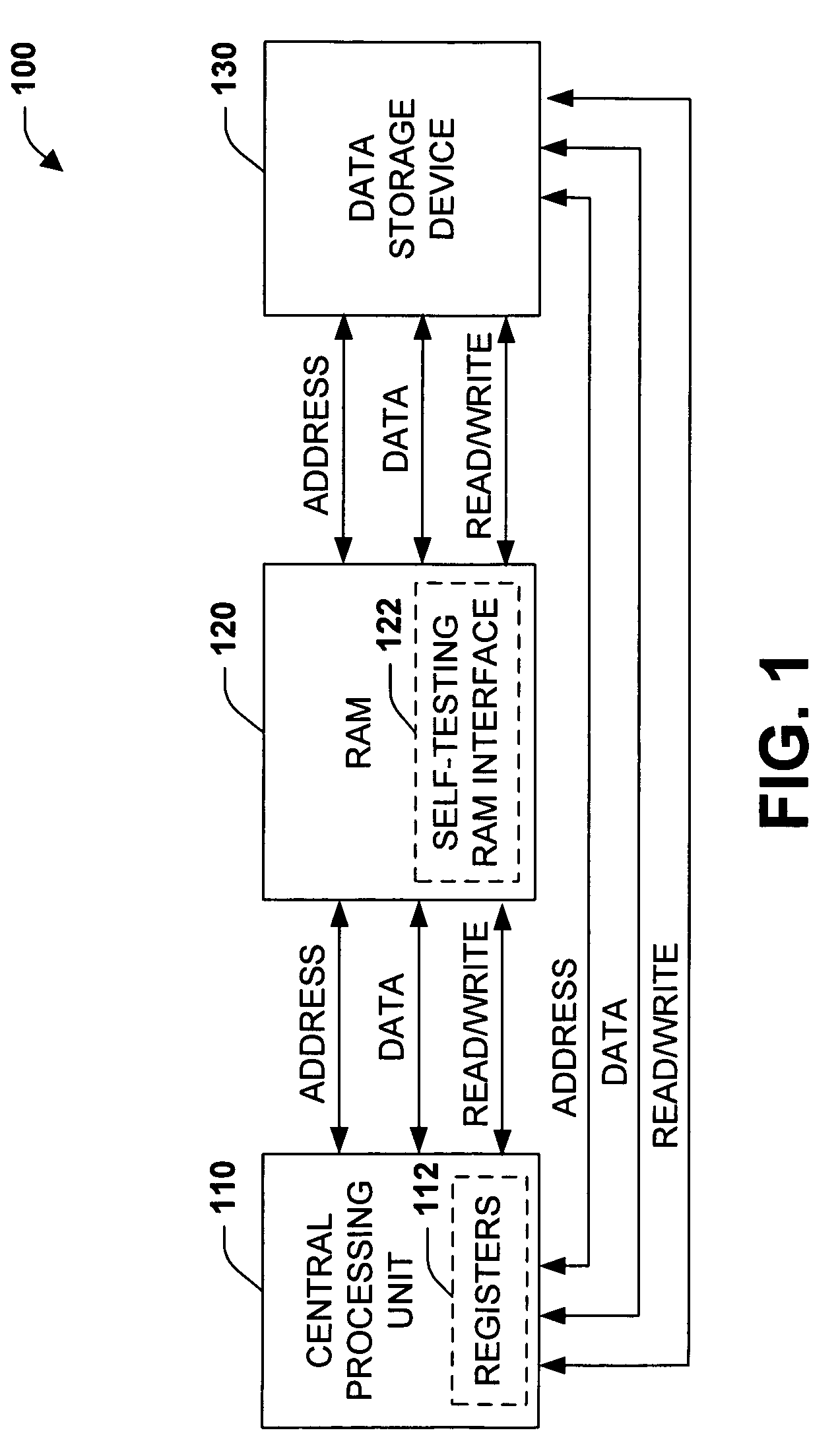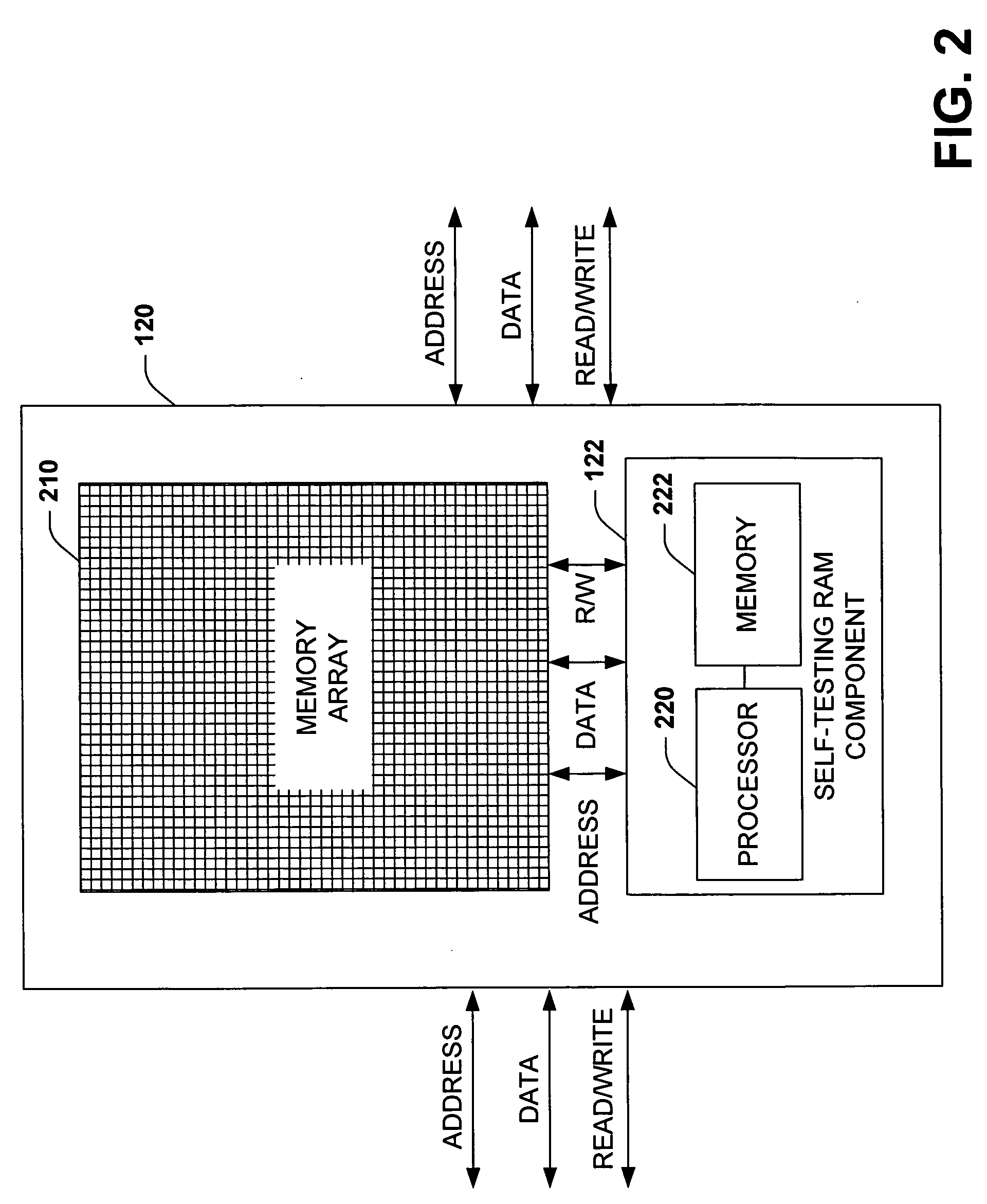[0011] In accordance with one aspect of the present invention, a
random access memory (RAM) device, which can self-test and self-correct memory errors, is provided. The RAM device or card contains a
memory array and an embedded self-testing RAM interface (also referred to herein as simply RAM interface or interface), which contains appropriate logic or a
microprocessor that facilitates, among other things, testing of the
memory array. The unique architecture of the present invention frees a
central processing unit (CPU) from having to execute tedious
memory testing algorithms on a large amount of data. According to one aspect of the invention, the self-testing RAM can execute all the tests that would conventionally need CPU intervention. According to another aspect of the invention, the CPU and the self-testing RAM interface can cooperate and testing duties can be divided amongst both the CPU and the self-testing RAM interface in an optimal fashion.
[0012] Testing of memory can vary in complexity depending on the nature of the test and the allotted time for test completion. As describe supra, conventionally a computer boot process is delayed in proportion to the amount of RAM on the platform. The present invention, however, can mitigate or even eliminate the conventional
start up delay without having to forgo RAM testing (e.g., quick boot). By dividing testing duties between the CPU and the self-testing RAM device, start-up times can be
cut in half or more. Further yet, according to another aspect of the invention, upon system start-up the self-testing RAM interface can effectuate all the testing procedures and make portions of RAM available to the CPU, concurrently running the boot process, in real-time after it is tested.
[0016] According to still another aspect of the subject invention, the RAM interface can be employed to facilitated secure storage of data to memory. In particular, a CPU interface can be utilized to retrieve and / or receive data, read / write indicators, and addresses from the
central processing unit. A data storage component can then utilize information provided by the CPU interface to store and retrieve data. To store data, a data storage component can generate a location for storage that may be different from that specified by the central
processing unit. Conventionally, related data is stored in contiguous memory cells, which makes it easy for an attacker to
decipher the captured memory contents. Thus, in accordance with one aspect of the invention, related data can be stored in noncontiguous memory cells to increase the difficultly of discovering memory contents. For example, the data storage component can randomly generate a memory location from available memory locations to store data thereto. In this manner, related data can be scrambled amongst one or more memory arrays to make it exponentially more difficult for an unauthorized entity to comprehend. The actual location where the data is stored can be indicated by a data map that maps the CPU address to the actual memory storage address to facilitate subsequent retrieval thereof. Furthermore and in accordance with one particular aspect of the invention, the CPU and / or
operating system can transmit a signature of the task or process context to the STRAM interface as a key to the process currently reading or writing to RAM such that only a process with the same context can read / write to the proper memory locations. Furthermore,
data mapping algorithms, the data storage component, and / or the data map, among other components can be removable from the system, thus leaving the memory useless to attackers and rogue processes.
[0017] In accordance with another aspect of the invention, memory data can be encrypted prior to storage to provide a further layer of protection. The data can be encrypted symmetrically such that an application user can provide a key that can be used to encrypt and later decrypt stored data. According to one aspect of the invention, an
encryption key (as well as other things) can be stored on a smart
cart. Hence, a user can present their card to a computer system. The computer can then provide the RAM interface with the key to encrypt
volatile memory data. Consequently, if a user suspended program action and removed their card, and therefore their key, the data stored in memory could not be read until the user represented the interface with their key to decrypt the stored data. It should be appreciated that the CPU may also write a signature (or key) to the self-testing RAM component, which locks read and or write access to specific memory regions in the global RAM
pool. This will prevent rogue processes from reading or modifying the RAM contents while the CPU is executing other processes / tasks or access from other memory addressable
bus interfaces including but not limited to VME (VersaModule Eurocard) and PCI (
Peripheral Component Interconnect).
[0021] In brief, the present invention contemplates improving overall system performance by adding or associating additional processing power with otherwise passive volatile memory devices. In particular, both
memory testing and
data security can be performed at a lower level thereby relieving this burden at least in part from a central processor and allowing it more efficiently process trusted data.
 Login to View More
Login to View More  Login to View More
Login to View More 


